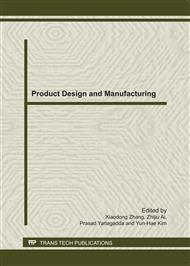p.75
p.79
p.84
p.90
p.94
p.102
p.106
p.111
p.115
On Formation and Estimation of Pores during Selective Laser Melting of Single-Phase Metal Powders
Abstract:
Porous metals are applied in many more fields than other porous materials. Pores in porous metal parts manufactured by selective laser melting (SLM) should not be regarded as defects but favorable characters because they are the main composition of porous metal parts. Therefore, fully densification is not the only target in forming metal parts via SLM. The formation mechanism of pores in SLM is studied mathematically in this article, and mathematical model is built to describe the formation mechanism. It is concluded that the shape of pores and the porosity of parts are the function of SLM processing parameters and the diameter of powder particles. Pores can be controlled and estimated by adjusting processing parameters and the nature of forming materials. Porous metal parts produced by SLM can be applied in many more fields owing that SLM technology is flexible to change the shape of these part and the nature of materials.
Info:
Periodical:
Pages:
94-101
Citation:
Online since:
September 2011
Authors:
Keywords:
Price:
Сopyright:
© 2011 Trans Tech Publications Ltd. All Rights Reserved
Share:
Citation:


